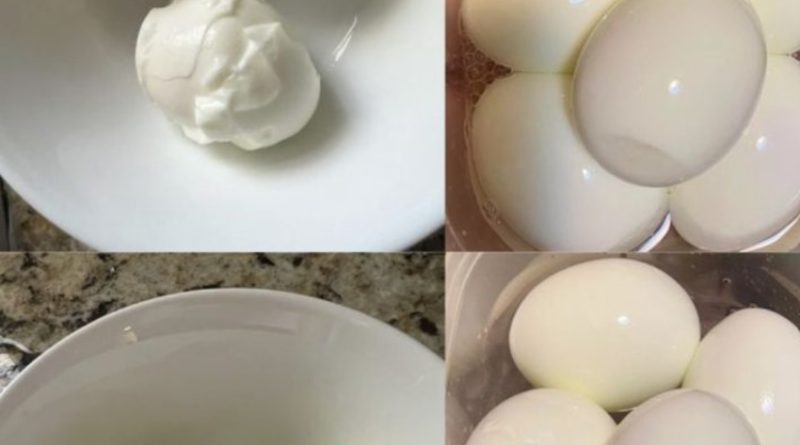Chef’s Clever Hack for Perfectly Peeled Hard-Boiled Eggs
The Genius Jacques Pépin Hack for Perfectly Peelable Hard-Boiled Eggs
If you’ve ever prepared hard-boiled eggs for breakfast, a salad, or an easy dinner recipe, you know the frustration of peeling them only to end up with torn whites and jagged edges. It can turn what should be a quick, family-friendly comfort food into a tedious chore.
Thankfully, world-renowned chef Jacques Pépin has shared a clever little trick that changes everything. This method is so simple and reliable, you’ll wonder why you didn’t try it sooner. With one tiny adjustment, your eggs will peel effortlessly — no more messy shells sticking to the whites.
This tip isn’t just for professional chefs. Whether you’re meal prepping for the week, making deviled eggs for a party, or putting together a quick snack, this hack will save you time, reduce waste, and make your kitchen routine much smoother.
Why Do Hard-Boiled Eggs Stick to Their Shells?
The frustration comes down to a small detail: the air pocket inside the egg. When eggs cook, that pocket expands and presses the white against the shell. Fresher eggs are even trickier because the membrane clings more tightly. Without adjusting the cooking process, you’re left battling stubborn shells.
The Jacques Pépin Method
Chef Pépin’s fix is brilliantly simple: poke a tiny hole in the wide end of the egg before boiling. This allows the air to escape, preventing the whites from bonding to the shell.
How to Do It Step-by-Step
- Choose your eggs – Older eggs peel more easily, but this works for any age.
- Grab a tool – A clean pin, needle, or thumbtack is perfect.
- Poke the hole – Hold the egg gently and pierce the broad end just enough for air to escape.
- Boil the water first – Bring it to a rolling boil before adding eggs.
- Lower gently – Use a slotted spoon to avoid cracks.
- Cook to preference – 6 min (soft), 8–9 min (medium), 10–12 min (hard).
- Cool quickly – Transfer immediately to an ice bath for easy peeling.
Why You’ll Love This
- Time-saving – No more slow, frustrating peeling.
- Perfect presentation – Smooth, intact eggs every time.
- Family-friendly – Great for salads, lunchboxes, and snacks.
- Versatile – Works for deviled eggs, ramen toppings, or quick breakfasts.
Tips for Best Results
- Don’t make the hole too large — just enough for air to escape.
- For large batches, poke all the holes before starting the boil.
- Always use an ice bath for the best peeling results.
Variations
Seasoned eggs – Add herbs or spices to the boiling water for subtle flavor.
Tea eggs – After boiling, crack shells lightly and steep in black tea with soy sauce for a savory twist.
FAQs
1. Can I use this method for soft-boiled eggs?
Yes, just reduce cooking time to 6 minutes.
2. Does it work with farm-fresh eggs?
Yes, though slightly more care is needed when peeling.
3. Will the hole cause leaks?
Not if it’s small and made at the broad end.
4. Can I boil eggs straight from the fridge?
Yes, but add them gently to prevent cracks.
5. How do I store boiled eggs?
In the fridge, up to one week.
6. Do I have to poke both ends?
No, only the broad end is necessary.
7. Can I steam eggs instead?
Yes, and this hole trick still helps.
8. What if I don’t have a pin?
A safety pin, sewing needle, or push pin works fine.
9. Does water temperature matter?
Yes — start with boiling water for better peel results.
10. Is this safe?
Completely safe when using a clean tool.
Make-Ahead & Storage
- Make-Ahead: Perfect for meal prep — boil up to a week in advance.
- Storage: Keep in a sealed container in the refrigerator.
- Reheating: For warm eggs, place in hot (not boiling) water for 1–2 minutes.
Conclusion
With Jacques Pépin’s tiny but brilliant hole-poking hack, peeling hard-boiled eggs becomes effortless. Whether you’re making an easy breakfast, prepping a slow cooker meal with egg toppings, or creating a family-friendly comfort food dish, this trick guarantees smooth, perfect eggs every single time.

